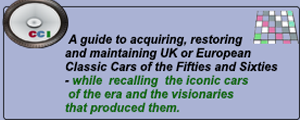 Fiat has successfully maintained its position as Italy’s largest producer of the economy to the mid-range motor car for well over a century.
Fiat has successfully maintained its position as Italy’s largest producer of the economy to the mid-range motor car for well over a century.
Fiat was founded during the last few months of the nineteenth century, initially as a partnership between Count Emanuele Cacherano of Bricherasio, who had been attempting to establish a company to be involved in the development of the first “ horseless carriages” produced in mainland Europe.
 One of those approached to invest in the new business, to trade under the title of the Società Anonima Fabbrica Italiana Automobili Torino or Fiat was Giovanni Agnelli.
Agnelli, still in his early Thirties, had an already earned himself a reputation as a shrewd business person, having initially pursued a military career, where he also picked up some relatively advanced engineering skills.
One of those approached to invest in the new business, to trade under the title of the Società Anonima Fabbrica Italiana Automobili Torino or Fiat was Giovanni Agnelli.
Agnelli, still in his early Thirties, had an already earned himself a reputation as a shrewd business person, having initially pursued a military career, where he also picked up some relatively advanced engineering skills.
After a period of initial organisation, the charter to establish the company was signed in July of 1899, with Giovanni Agnelli sitting on the Board of Directors. From the early days of the company’s inception, it became apparent to all concerned that Agnieli would be the driving force behind the new enterprise.
 Thanks to his tremendous drive and energy, determination to succeed, Agnieli almost single-handedly ensured that Fiat would rapidly grow to become a market leader in this exciting new industry.
Thanks to his tremendous drive and energy, determination to succeed, Agnieli almost single-handedly ensured that Fiat would rapidly grow to become a market leader in this exciting new industry.
Just a few short months after their establishment, Fiat were already in production from a plant in Corso Dante, in Turin. With considerable finance at the disposal, Fiat started their production on a significant scale, employing 150 people.
During 1900, their first full year in production, Fiat produced a commendable 24 vehicles as well as developing several technical improvements.
 One of the more fundamental was the use of a conventional steering wheel instead of the rudder-like mechanism that was everyday use in those early days of the car industry.
In the early days of the Twentieth century, owning a car was for the privileged few. Giovanni Agnelli was well aware of this and geared the first Fiats toward this market, promoting his company through participating in gruelling car tours and uphill races.
Races where his cars figured particularly well.
One of the more fundamental was the use of a conventional steering wheel instead of the rudder-like mechanism that was everyday use in those early days of the car industry.
In the early days of the Twentieth century, owning a car was for the privileged few. Giovanni Agnelli was well aware of this and geared the first Fiats toward this market, promoting his company through participating in gruelling car tours and uphill races.
Races where his cars figured particularly well.
![]()
During those early days, Fiat’s growth was quite remarkable, driven by Agnelli, who, in the meantime, was acquiring financial control of the company through the steady accumulation of shares from his fellow investors, who did not share the same optimism for the long term future of Fiat as he did.
 In 1908, the company also made the bold move of establishing a footprint in the United States, where their luxury cars were well received, often commanding prices considerably higher than their local competitors.
With a desperate need to increase their production capacity, in 1916 Fiat laid the foundation stone on what was to become the Lingotto plant. Situated on the outskirts of Turin, befitting the Fiat image, the Lingotto plant was many decades ahead of its time.
To minimise its footprint, the Lingotto plant was a single building, although immense in proportion at five stories high and half a kilometre in length.
In 1908, the company also made the bold move of establishing a footprint in the United States, where their luxury cars were well received, often commanding prices considerably higher than their local competitors.
With a desperate need to increase their production capacity, in 1916 Fiat laid the foundation stone on what was to become the Lingotto plant. Situated on the outskirts of Turin, befitting the Fiat image, the Lingotto plant was many decades ahead of its time.
To minimise its footprint, the Lingotto plant was a single building, although immense in proportion at five stories high and half a kilometre in length.
 Completed in 1922, the Fiat Lingotto plant was, for many years, the largest factory in Europe, with its five-story production line topped off by futuristically designed test on its roof.
On the domestic front, Fiat gradually began to expand their product range, not only producing cars but also light vans, as well as establishing separate divisions to manufacture aircraft engines and farming equipment.
With their massive factory now fully operational, Fiat was going from strength to strength. It was evident to all industry observers that there was no better person to lead the company through these times of dramatic expansion than Giovanni Agnelli.
Completed in 1922, the Fiat Lingotto plant was, for many years, the largest factory in Europe, with its five-story production line topped off by futuristically designed test on its roof.
On the domestic front, Fiat gradually began to expand their product range, not only producing cars but also light vans, as well as establishing separate divisions to manufacture aircraft engines and farming equipment.
With their massive factory now fully operational, Fiat was going from strength to strength. It was evident to all industry observers that there was no better person to lead the company through these times of dramatic expansion than Giovanni Agnelli.
 Agnelli, who held close ties to the car industry in the US, saw the future for Fiat as being the principal supplier for a broad range of vehicles from entry-level to medium range.
Under his guidance, Fiat had no aspirations of competing against the other Italian manufacturers in the sports car or luxury automobile sector, instead providing simple, well-constructed value for money cars for the mass market.
In the mid-Thirties, with demand for new cars hit record levels. Fiat introduced a new model, the Topolino, which was their version of the “ people’s car” – a style that was very much in demand during these times.
Agnelli, who held close ties to the car industry in the US, saw the future for Fiat as being the principal supplier for a broad range of vehicles from entry-level to medium range.
Under his guidance, Fiat had no aspirations of competing against the other Italian manufacturers in the sports car or luxury automobile sector, instead providing simple, well-constructed value for money cars for the mass market.
In the mid-Thirties, with demand for new cars hit record levels. Fiat introduced a new model, the Topolino, which was their version of the “ people’s car” – a style that was very much in demand during these times.
 No model better represented the Fiat manufacturing and marketing philosophy than the Topolino which remained in production till 1955.
At that point the Topolino was replaced by the Fiat 600, to which it bore more than a faint resemblance.
With demand for Fiats on a seemingly never-ending increase, and with no ground available around the Lingotto plant, the company purchased a large plot of land, also in Turin, on which they built their Mirafiori Plant.
No model better represented the Fiat manufacturing and marketing philosophy than the Topolino which remained in production till 1955.
At that point the Topolino was replaced by the Fiat 600, to which it bore more than a faint resemblance.
With demand for Fiats on a seemingly never-ending increase, and with no ground available around the Lingotto plant, the company purchased a large plot of land, also in Turin, on which they built their Mirafiori Plant.
![]()
Less dramatic in appearance than the Lingotto, with considerably fewer frills, the Mirafiori was designed and constructed to meet the demands of mass production.
When the Mirafiori plant opened its doors in 1937 Fiat's output capacity increased dramatically almost overnight.
 In 1940 Italy found themselves once again at war, meaning that production at both Fiat’s plants was utilized to help the war effort.
In 1940 Italy found themselves once again at war, meaning that production at both Fiat’s plants was utilized to help the war effort.
Not long after hostilities ceased with Italy defeated and in disarray, Fiat, already having to face the challenges of reconstruction and retooling, were dealt a tragic blow when Giovanni Agnelli, the President of Fiat, passed away suddenly in December of 1945.
 Agnelli was 79 at his passing and had led Fiat for more than 45 years.
Agnelli was 79 at his passing and had led Fiat for more than 45 years.
Vittorio Valletta was the man handed the challenging task of filling Agnelli’s shoes, overseeing the repairs and reconstruction of the Fiat plant’s as well as preparing the blueprint for the company’s transition into the post-war world.
Under Valletta, Fiat’s recovery was slow but steady as Italy’s economy began to get back on its feet. In 1955, Fiat eventually replaced the Topolino with the Fiat 600, almost simultaneously releasing the 500, a smaller version of the same theme.
Both models were exactly what the Italian public needed in the still semi-austere mid-Fifties.
As the country’s economy began to improve, Fiat was ready with a string of larger and more luxurious family sedans, offering power and comfort.
 After the passing of Giovanni Agnelli, although some members of the family were involved in the running of the company, and remained the principal shareholders, none of them had such a strong effect on shaping Fiat’s destiny than its original patriarch.
After the passing of Giovanni Agnelli, although some members of the family were involved in the running of the company, and remained the principal shareholders, none of them had such a strong effect on shaping Fiat’s destiny than its original patriarch.
Over the years, Fiat has grown to become the most dominant force in car manufacturing in Italy, holding controlling power in both Ferrari and Maserati, among others.
Fiat production units can be found around the world, emphasising the group’s position as one of the key players in the international motor industry.
Back to the homepage- and don't spare the horsepower.




